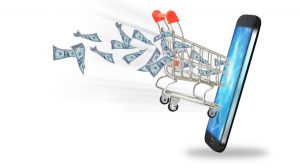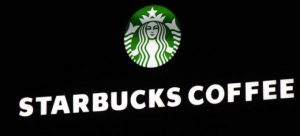Integrating Brick-&-Mortar and Digital
Technological advancements are redefining the way customers interact with retailers.
Customers now expect much more from brands they love, and omnichannel strategies are driving development within marketing departments to meet these expectations. A plethora of companies and retailers have introduced a seamless shopping experience across mediums by implementing omnichannel marketing strategies. From brick-and-mortar to website to mobile app, shopping has become a fully integrated experience, thanks to omnichannel.
Last week we dove into the Nordstrom’s world and reviewed the different ways the retailers use omnichannel to enhance the customer experience. Today, we are continuing this and looking at how luxury retailer Neiman Marcus is integrating brick-and-mortar with digital to create a heightened customer experience.
Mobile App
Despite having only 42 brick-and-mortar stores, compared to most luxury retailers with anywhere from 60 to 100 stores, Neiman Marcus is still the biggest luxury retailer in the world.The 42 brick-and-mortar stores play host to a large number of fashionable and high-end items. According to CEO Karen Katz, however, the luxury retailer has a “robust selection of products online that [they] don’t have room for in [the] brick-and-mortar store.” Consequently, Neiman Marcus’ efforts to bridge the gap between the products available virtually and physically, have given way to a successful mobile app. The mobile app serves as a larger commerce platform, as well as, a conduit for customer engagement with Neiman Marcus by making shopping easy and convenient for customers.
Customers have a way to shop on-the-go and find more products that cannot be found in Neiman Marcus stores. In-store associates are equipped with tablets featuring the app and help customers quickly find products online and offline. Sales associates are also encouraged to direct customers to browse through the online and mobile stores. Customers can access these same sales associates via text, email, phone call, or FaceTime while on the app. Neiman Marcus also has a solution for finding any item, from anywhere, within minutes. The mobile app has introduced a new feature called “Snap. Find. Shop.”. The feature allows shoppers to take photos of clothing and accessories they see at any store, and the app will find the exact or similar product on the Neiman Marcus mobile store. The mobile app provides customers with a smooth blend of online and brick-and-mortar services, heightening the customer experience.
Virtual Dressing Room
Another way Neiman Marcus digitally transformed the in-store experience is by adding digital dressing rooms. The retailer deployed the “Memory Mirror,” a device which enables shoppers to digitally compare outfits and items of clothing while in the physical store. Acting as a large video screen and camera, the Memory Mirror allows customers to see outfits from 360 degrees. The mirror is password-protected and connected to shoppers’ Neiman Marcus account. Customers log into the mirror and can browse outfits they previously tried on and captured in 360-degree, eight-second videos. These “try-on videos” can be saved to the customer’s mobile device, emailed, and shared on social media. Shoppers can also compare clothing options side-by-side, as the mirror remembers what the customer has already tried on. This initiative enables customers to experience flawless digital integration and increased interaction with Neiman Marcus. The Memory Mirror is a complementary blend of brick-and-mortar and digital shopping.
Neiman Marcus relies equally on mobile and brick-and-mortar stores. The seamless incorporation of online and offline has kept customers highly engaged with the retailer. The customer-centric philosophy has propelled Neiman Marcus into implementing innovative and different omnichannel strategies. Neiman Marcus has truly made the digital shopping experience and physical shopping experience seamless.
Tune in next week as we take a look at the third and final retailer in our omnichannel trilogy – Kohl’s.


















